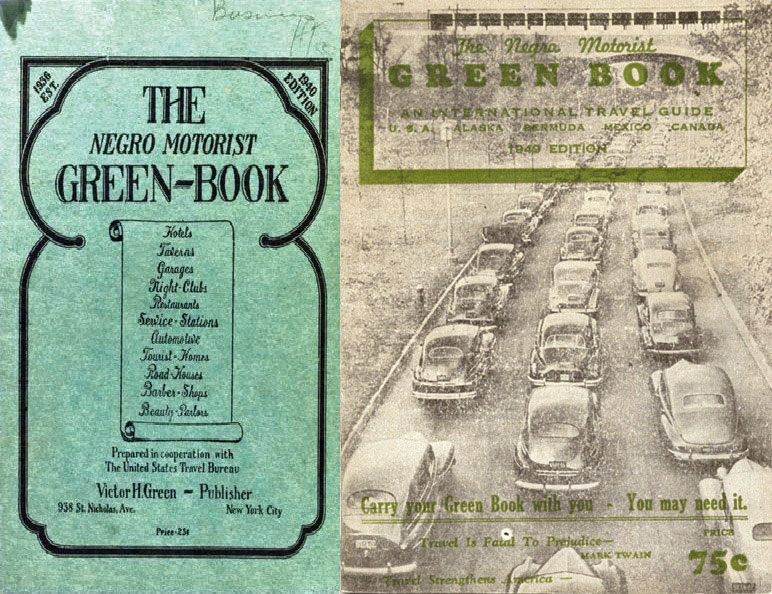By: Mister Jackson
Racial profiling in America is not a new concept by any means. In fact, it has existed as far back as when the colonists landed on Plymouth Rock and thus, as Malcolm X wrote, when ‘the [Plymouth] rock landed on us’.
Remember that?
A television show that is now airing on cable is ‘The Injustice Files: Sundown Towns’ on Discovery. The host of the show visits several places to find out if sundown towns—where blacks were excluded from public life after dark—still exist. One of the stories follows the case of a young black woman, Carol Jenkins in 1968, who was knifed to death after being caught in a sundown town. The other stories examine the cases of the exclusion of Dr. David Hoxie from an Ohio town in 2004, and the banishment of African Americans from an Illinois town in 1954.
Sundown towns were American towns that prevented Black people from living or visiting there after dusk. This exclusionary practice was borne out of the north where many African Americans made their living by working as domestic servants in white homes and towns. Nightly curfews were implemented to “encourage” domestic workers to leave the town after their daytime shifts ended.
We’ve all heard the term ‘DWB’, Driving While Black, and the incidents of racial profiling that is exercised against the victims of this act. Well, ‘TWB’, Traveling While Black, was the concern of black motorists years ago when black motorists began to purchase cars and take to the road, not just for convenience’s sake, but often to avoid segregation on public transportation and to be free of discomfort, discrimination and insult while using the so-called ‘public’ transportation services.
Due to the fact that black travelers encountered the perils and inconveniences being refuse service @ stores, mechanic shops, hotel accommodations, physical threats and attacks and forced removal from whites-only “sundown towns”, led to one Victor Hugo Green to write the ‘Negro Motorist Green-Book’. An annual guidebook for blacks drivers, the guidebook was published in the United States from 1936 to 1966. Also known as “the bible of black travel during Jim Crow”, it enabled black travelers to find lodgings, businesses and gas stations that would serve them along the road. Along with most of the U. S., it also covered parts of Canada, Mexico and the Caribbean, including Bermuda.
With the passage of the Civil Rights Act of 1964 which outlawed the types of racial discrimination for which the book was intended to address, the book ceased publication.
After having seen this show, The Injustice Files: Sundown Towns, it caused me to remember overhearing and being told directly by older male relatives about practicing safe travel when I began to take to the road as a younger man to travel to and from Louisiana to see my daughter in the early 90’s and the stories of when they were young men themselves in the 40’s 50’s and 60’s and working in remote towns and having to leave ‘before sundown’.
I was wise enough in the 90’s to understand the realness of their concerns, but in the 60’s and 70’s when I heard them tell such stories, I balked at the fact of some white person trying to tell someone to ‘get out of town before sundown’ and wrote most of it off to being part tall-tale influenced by the country-boy fabrication and the volume of alcohol that they were ingesting at the time.
Having recently passed through and visited some ‘one-horse towns’ in places like Northern Texas, Arkansas and Tennessee and seeing conditions as they are today, I can only imagine how conditions were then. The book would have been a gold mine of helpful knowledge about the do’s and don’ts and when’s and why’s for the black motorist!
This show allowed ‘Uncle Floyd, L.W, Uncle Moot, Mr. Willy Moses, Grandfather, Uncle John, Daddy and the beloved ‘Ma’Dear Jackson’, tell me from their graves, ‘I told ya’, didn’t I boy!’
P.S. –
At the bottom of the book, it reads ‘Carry Your Green Book – You May Need It!’
Today, I say, ‘Keep Your Cell Phone With You (and Charged), You May Need It!’
Interested in a copy of the book, http://www.autolife.umd.umich.edu/Race/R_Casestudy/Negro_motorist_green_bk.htm

